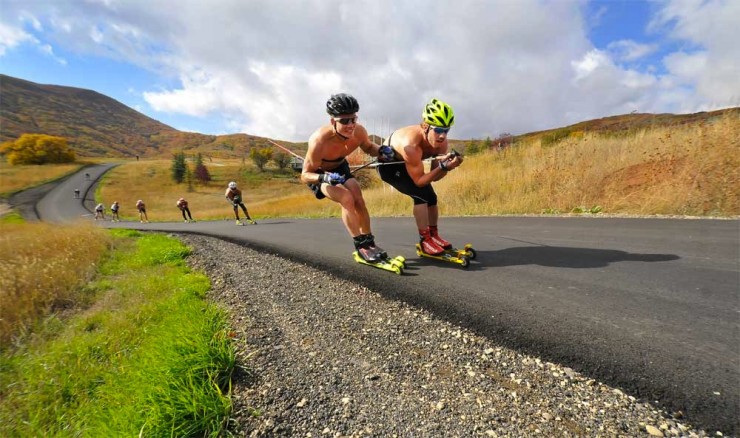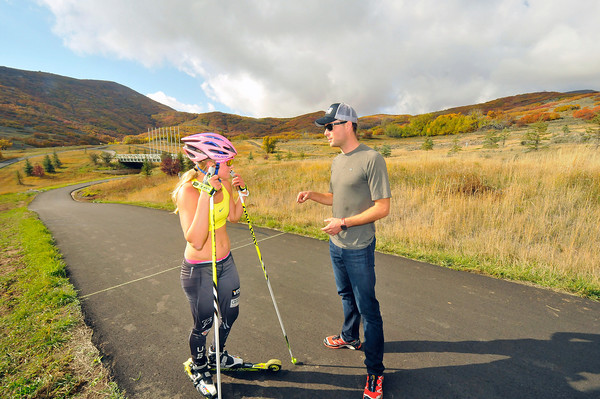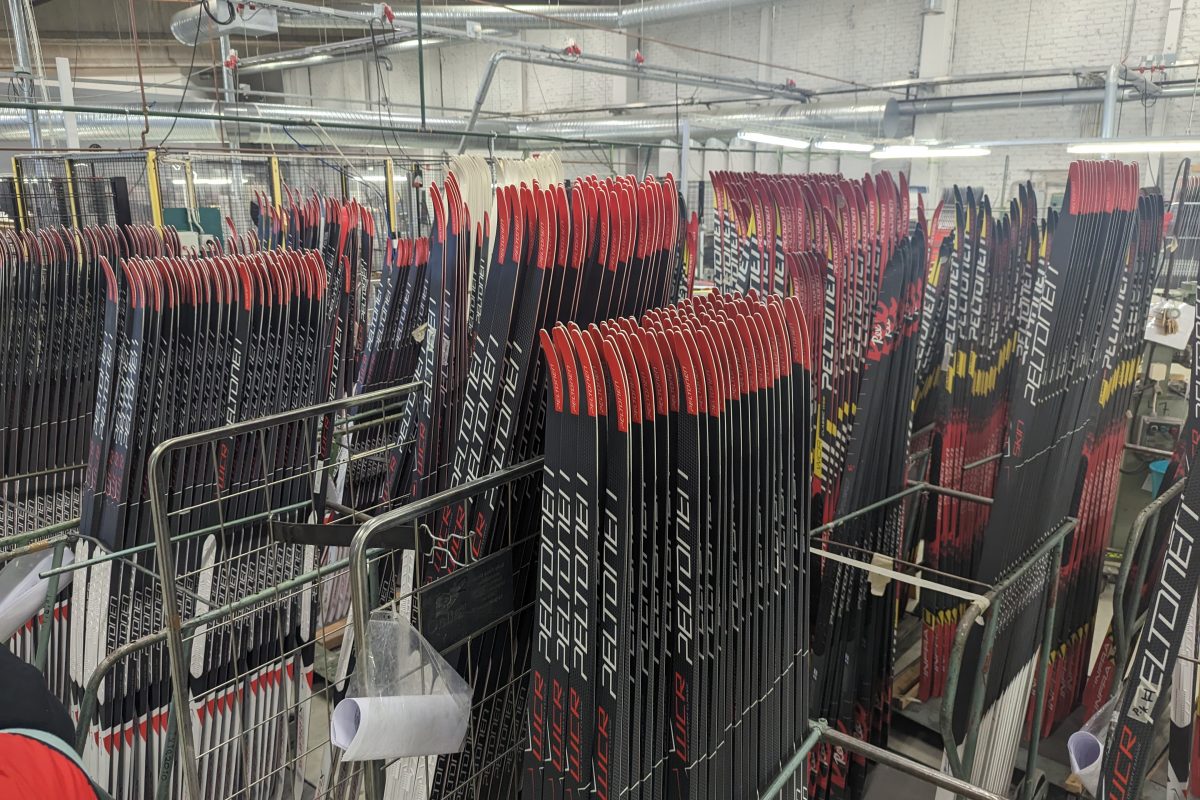
If you’re looking for a city with the most elite U.S. skiers per capita, Park City, Utah, has to be it right now.
According to U.S. Ski Team (USST) head coach Chris Grover and women’s coach Matt Whitcomb, 50 athletes have been in town living and training at elevations around 8,200 feet for the last week – some longer than that. The entire national team is there, as well as U.S. Biathlon, and soon, the Paralympic Nordic squad as well.
All of the top nordic clubs in the U.S. are there, too, mixing it up with some of the best seniors and National Training Group (NTG) skiers in the country.
On the phone, Grover explained that managing 50 athletes at a training camp isn’t easy, especially when you want productive and non-chaotic sessions. So the USST coaches laid out specific workouts for the entire group, including a skate sprint, threshold intervals and classic over-distance, and staggered athletes by gender or ability to make the sessions competitive.

Certain morning workouts were limited to the national team, NTG and senior invites, with roughly 10 male and six female seniors previously selected based on their results last season, Whitcomb explained in an email. The coaches also split up strength sessions at the U.S. Ski and Snowboard Association’s Center of Excellence (COE) and gyms around town.
“Ideally we would invite everyone for every session, but it comes down to an issue of safety and workout quality when the group gets too large,” Whitcomb wrote. “For the days that we limit our training group size we will assist the club coaches and athletes to find a productive venue to get that group together. There is no shortage of training opportunities in Park City.”
That’s why they’re all there.
“It’s interesting,” Grover said. “We’re at the end of an Olympic cycle here. There’s a reason that this camp is bigger than it has been in the past and that is because a lot of these athletes are trying to make the Games.”
Each year, the USST invites seniors on the cusp of the national team to all its camps, as well at NTG skiers, he explained. For many clubs, Park City is a practical place to be in the fall for altitude training before they can get on snow.
But Grover guessed that next year when the four-year Olympic cycle restarts, the flock might not be so large. Either way, there’s quality training at all levels now, he said.
“It is cool to see from a developmental perspective, to see some of the younger athletes … already making big steps,” Grover said. “That’s one of the more exciting things we’ve taken away from both this camp and the Lake Placid camp [last month]; we have some real talent in our pipeline.”
Looking at his team, Grover said there was even more to be excited about. This time last year, several of his athletes couldn’t test due to injuries, including Kikkan Randall (foot), Sadie Bjornsen (back) and Holly Brooks (rib). Early last week during two days of physiological testing at the COE, Grover said basically everyone recorded personal bests.
“We overall have a really healthy team if you compare where we were last year,” Grover said. “We’re healthier and more fit across the board. I’m also excited for many athletes who aren’t part of the national team. Many athletes in the community have raised their fitness as well. There’s been huge technical and fitness improvements in elite [U.S. skiing].”
Out on course, whether practicing rollerski agility drills in a closed parking lot or zooming around the newly repaved course at Soldier Hollow, Grover said he’s seen significant progress on the national team as well.
“We’ve certainly had a good summer; when we get on snow at the end of this week we’ll be renewing our technical emphasis,” he said. “I’m super excited to see, it seems like its been a great season of training, but we really seem to be having a lot of breakthroughs.”

In the last week, the U.S. Ski Team has been ramping up the focus of certain workouts for its final dryland camp of the season.
“We did one pretty fun agility training on skate rollerskis in Park City last week,” Grover said. “That’s something we’re trying to do more and more at our camps, get people a little more used to their rollerskis … in ways they’re not quite used to moving.”
On Thursday, the team did a skate-speed session with stations that worked on specifics like cornering, uphill transitions, and double-pole starts to mimic the World Cup.
The next day, they did a long “threshold-to-threshold-plus” skating workout, Grover said.
“In a lot of these workouts, we’re trying to make them a little Sochi-specific,” he said of the 2014 Olympic venue. “Soldier Hollow is an ideal course because you’re only a little higher [in elevation] then the venue.”
And if the barometric pressure is just right on a given day in Sochi, Russia, the athletes could feel like they’re back at Soldier Hollow.
(Soldier Hollow lies between 5,000 and 5,800 feet above sea level, Sochi’s Krasnaya Polyana snow-sports venues are just above 4,500 feet.)
Besides the altitude, the USST has also been practicing on similar courses to that of Sochi. According to Grover, most of the Olympic courses — sprint and distance — end with a huge climb and fast drop down the other side. Athletes then have to maneuver a hard 180-degree lefthand turn, drop down a little further and ski the circumference of the stadium with “a big sweeping right” into the finishing lanes.
So the USST has been repeating that sequence and getting as comfortable as possible with it on rollerskis, which don’t quite replicate the demands of skiing on snow, but help with muscle memory.
“There’s lots of twists and turns and ups and downs so were definitely practicing our transitions, our cornering, [and] our cornering in groups,” Grover said. “That keeps the training fun.”
On Tuesday, the USST will host a skate time trial at Soldier Hollow open to all skiers with no elimination to give everyone a chance at the rounds. Coaches tried to make the course times similar to Sochi’s sprint course, but Grover said they were having a difficult time incorporating a big enough hill into the men’s race.
For the rest of the week, the USST will wrap up with two distance workouts – easy distance on Wednesday and a long-distance run on Thursday — before heading to Canmore, Alberta, for the official opening of Frozen Thunder on Saturday.
According to Whitcomb, they’ll up the intensity on snow at a lower elevation around 5,000 feet.
“The Alaskans [APU skiers Randall, Brooks, Sadie Bjornsen and Eric Bjornsen will] travel back home to hopefully get on snow at Hatcher’s Pass or Fairbanks, and will also crank up their intensity,” he added.
***
U.S. Ski Team photos: Soldier Hollow training | Rollerski agility
Video: Level 3/4 Intensity
Alex Kochon
Alex Kochon (alexkochon@gmail.com) is a former FasterSkier editor and roving reporter who never really lost touch with the nordic scene. A freelance writer, editor, and outdoor-loving mom of two, she lives in northeastern New York and enjoys adventuring in the Adirondacks. She shares her passion for sports and recreation as the co-founder of "Ride On! Mountain Bike Trail Guide" and a sales and content contributor at Curated.com. When she's not skiing or chasing her kids around, Alex assists authors as a production and marketing coordinator for iPub Global Connection.



